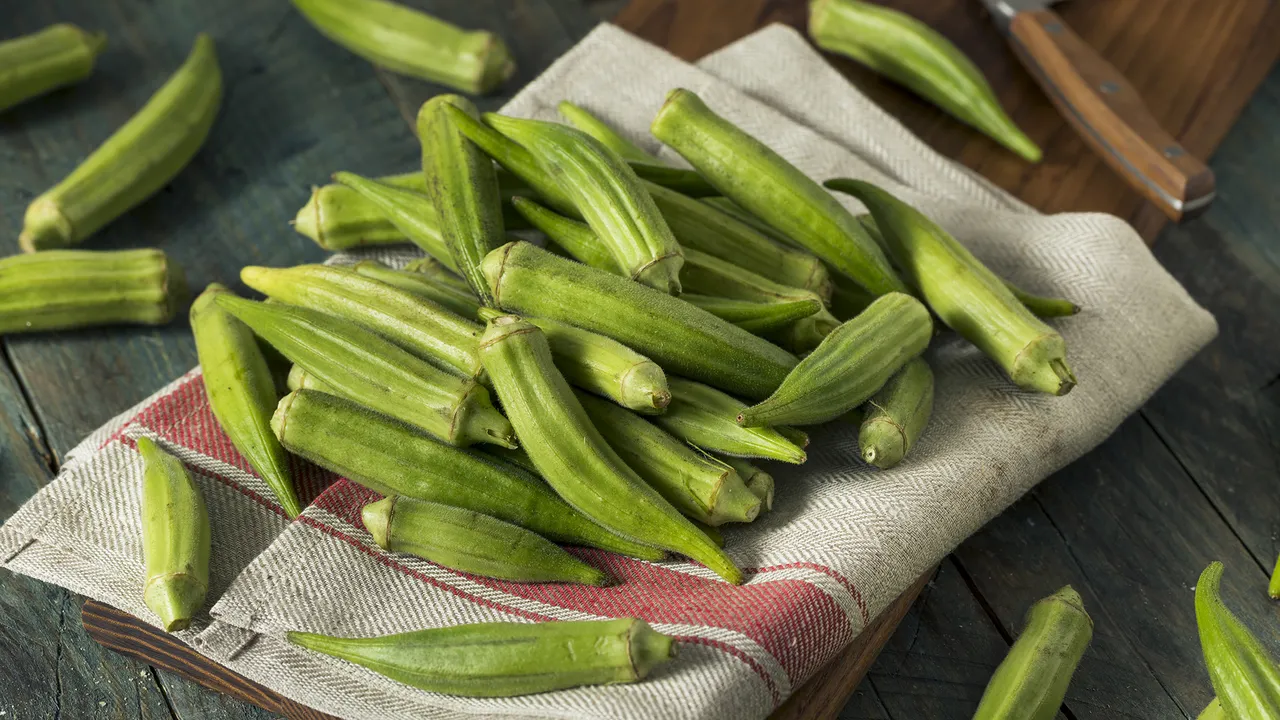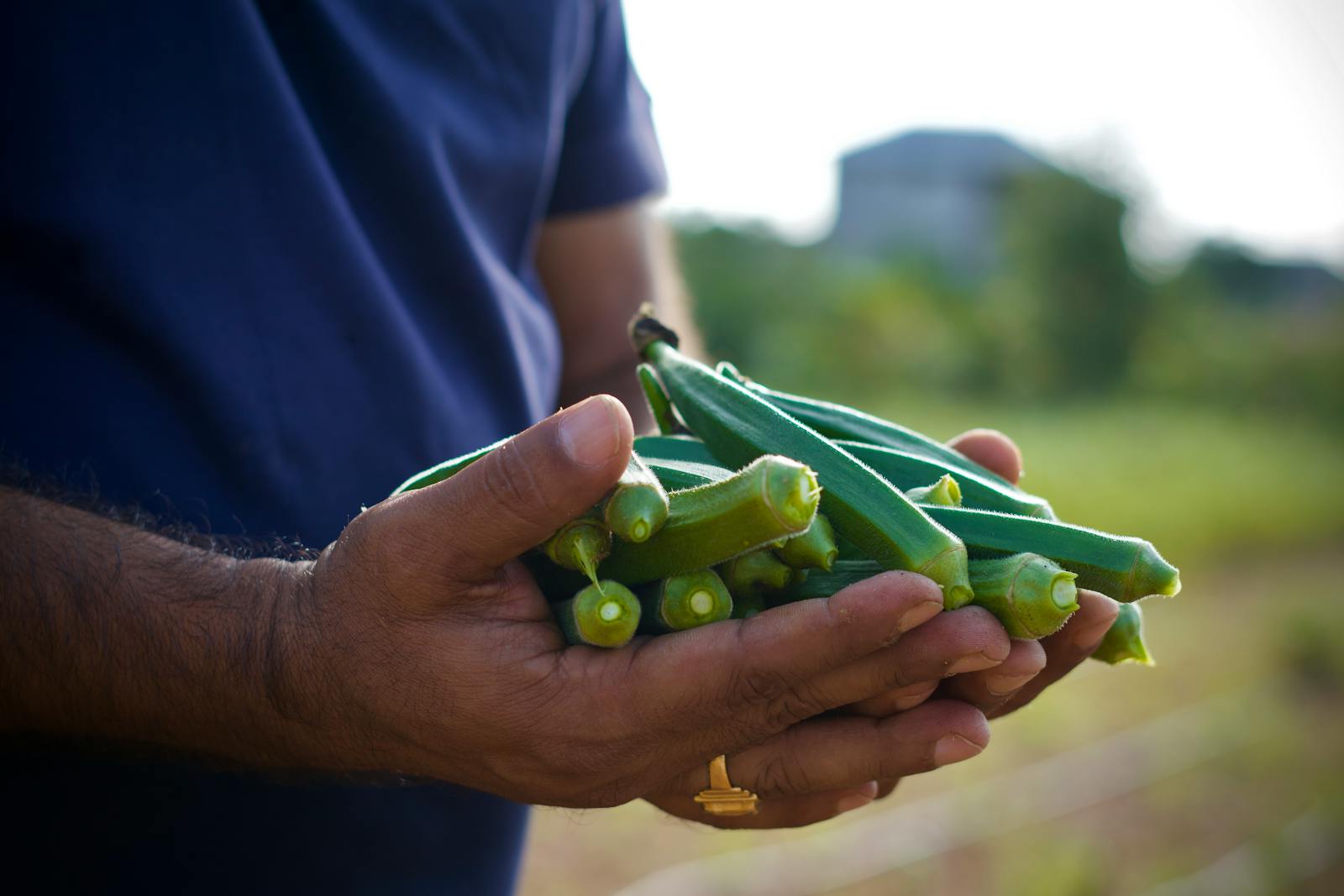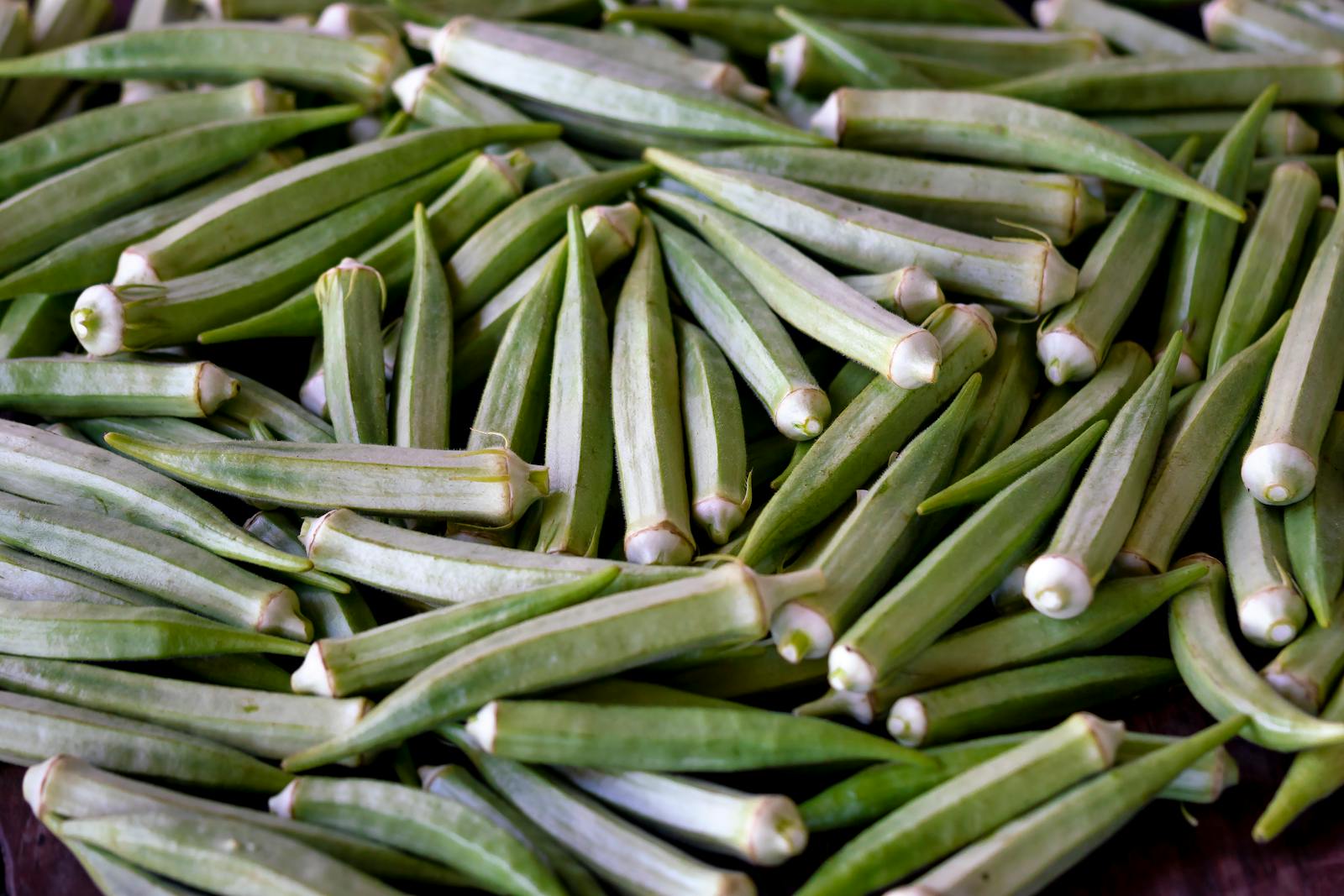How to grow okra – from seed and in pots
Discover how to grow okra, the most versatile superfood that goes from seed to plate in just 60 days
Learn how to grow okra for a quick-cropping harvest that adds body and flavor to soups, stews, and more.
Also known as ladies' fingers, okra can be eaten raw in salads, as well as roasted, grilled, or sautéed for a delicious side dish. This versatility makes it an excellent addition to your kitchen garden ideas.
 |
| How to grow okra – from seed and in pots |
While okra’s pods can be cooked whole, when chopped they release a natural thickener into the cooking liquid, which is widely used to improve the consistency of gumbo and stews.
They are packed with nutrients, offering an excellent source of Vitamin C, B and K1, as well as magnesium and folate.
Okra is also a surprisingly attractive crop to grow. Belonging to the mallow family, it is related to hibiscus, which means its flowers look like the plant’s blossoms.
‘Okra’s flowers are edible and can be stuffed with cheese or used as a spring garnish. Although, they are almost too pretty to eat!’ says Diane Kuthy, creator of growing resource How to Grow Everything.
 |
| How to grow okra – from seed and in pots |
HOW TO GROW OKRA FROM SEED
As long as you live in a climate that has good summers, it's easy to learn how to grow okra from seed.
‘Okra is ideal for beginner growers and is one of the best crops for enduring hot summers. It thrives in heat when other crops struggle,’ says Jennymarie Jemison, garden educator and founder of seed store Joy Max Jardin.
Your biggest job with okra is keeping up with the harvests before the bountiful pods get too large and tough to be enjoyed.’
- You can sow okra seeds straight from the packet, but to improve the seed germination rate, first soak them in water for a few hours.
- Rake your soil to a fine tilth before planting your seeds. ‘Okra does well in poor soil, even with lots of clay provided it drains,’ says Jemison. ‘Add compost and an all-around fertilizer to prep the area before planting and again mid-season for a boost.’
- ‘Sow the seeds half an inch deep in rows 18-36 inches apart,’ says Lindsey Hyland, founder of Urban Organic Yield.
- Okra can grow as high as 6ft, so put in support at the planting stage. There are some fantastic vegetable garden trellis ideas to help maximize your home harvest.
- Once the seedlings have reached 3-4 inches tall, thin them to 2-3 feet apart. To do this, select the weaker seedlings and cut them off at the base.
- ‘Okra needs plenty of water, so make sure to give it a good soaking once a week – especially if you’re growing it in soil that doesn’t hold moisture well,’ says Hyland. However, avoid overwatering okra, as this could cause root rot – look out for the lower part of the seedling turning black.
- ‘Remove laterals from the plant, as they bear little fruit, shade the main stem, and make the care routine more complicated,’ says Julia Omelchenko, botanist expert for the NatureID app. ‘The plant’s stem is covered with tiny spines that can cause irritation, so wear clothes with long sleeves and gloves when caring for the plant.’
- It takes around 60 days for okra plants to reach maturity, at which point you can begin to harvest the pods.
WHEN TO GROW OKRA
The key to learning how to grow okra from seed is to time it
correctly, and not to start them off too early.
‘Okra is a hot weather crop – meaning it prefers warm soil and
lots of sun,’ says Kuthy. ‘For warm climates, start okra seeds in the spring when
temperatures are consistently around 60°F (15°C) both day and night.
‘For colder climates and shorter seasons, seeds should be
started indoors about a month before your zone's last frost date and
transplanted outdoors when temperatures are consistently above 60°F (15°C).’
If your local summers aren’t reliably warm, then it's best to
grow okra in a greenhouse.
GROWING OKRA IN CONTAINERSHow to grow okra – from seed and in pots
Okra makes a good addition to
your vegetable garden container ideas, and this is often a
necessity if you are growing the plant in a greenhouse.
‘Okra features a tap-root system, so its main root grows deep
into the soil. Therefore, make sure to choose a narrow, deep container,’ says
Omelchenko.
‘Place a layer of drainage material at the bottom, and while
watering, soak the soil all the way down but avoid overwatering and
waterlogging. You must also avoid damaging the ball of soil when potting the
plant.’
Container size is key to the success of learning how to grow
okra in containers.
‘Okra is a hungry plant whose growth is easily restricted by pot
size,’ says Kuthy. ‘I've tried growing okra in containers and I've learned that
they need large containers (at least 5 gallon or larger) and a steady flow of
nutrients.’
The variety of okra you choose will also make a difference to
the crop’s success.
‘Look for a dwarf variety that
doesn't grow above 5 feet tall,’ says AJ Rains, founder of Gardening
Abundance(opens in new tab). ‘You will also want to make sure that
you supplement your soil with compost or aged manure to ensure adequate
nutrition for the plant.’
How to grow okra – from seed and in pots
WHEN TO HARVEST OKRA
An important part of knowing how to grow okra is to harvest it
at the right time to capture the best flavor of the pods.
‘The fruiting season starts two months after planting and lasts
until the frosts begin,’ says Omelchenko.
‘Use a knife to cut off fruits when they become deep green.
Overripe fruits aren’t edible.’ In general, you’re looking for them to be
tender and measure 2-5 inches long.
If you can give okra the right growing conditions and pick it as
soon as it is ready, you should find you have a bumper harvest.
‘The more okra pods you pick, the more the plant produces,’ says
Kuthy. ‘For this reason, you should consistently harvest okra pods throughout
the growing season.
'Sometimes, this means that you are picking just a handful of
pods each day, but it is important to pick pods whenever they are ready. Don't
wait for a single day to do a big okra harvest or you'll be disappointed with
your yields.’
If you produce more okra than you can use, then freeze it to use
for cooking over winter.
‘Before cooking, wipe the fruit with a cloth to remove all the
spines that may cause allergies,’ adds Omelchenko.
HOW TO MAKE OKRA PRODUCE MORE
The best way to make okra to produce more is to pick the plants
every 2-3 days, as this will encourage new growth.
‘Once it gets really hot in August, pod production will finally
slow down,’ says Jemison. ‘Once this happens, or if you stopped picking weeks
back, you can trim back the plants into more of a tall shrub shape, and they
will produce a smaller second round.’
How to grow okra – from seed and in pots
DEALING WITH PESTS
Later in the growing season, okra are prone to aphids. If the
plant is still producing, then treat them with an insecticidal soap spray. If
the plants are over, then remove them or use them as sacrificial plants.
‘Old okra plants can be left to serve as “aphid hotels”,
attracting aphid-eaters like ladybugs and assassin bugs to the garden,’ says
Jamieson. ‘They are great trap plants at this stage, drawing the aphids away
from other crops.’
Also consider the benefits of companion planting at the outset of planning a kitchen garden. ‘Companion planting is a
method of planting one or more plants together that create a symbiotic
relationship,’ Kuthy.
‘Okra can be companion planted alongside herbs, such as
chamomile, sage, thyme and dill, as they help to repel insects and other
pests.’
BEST
OKRA VARIETY
‘Choose from dwarf okra plants, that reach around 1.6ft (0.5m)
high, and taller varieties, which grow up to 6.6ft (2m). Mind the height of the
plant if you’re growing it in a greenhouse, says Omelchenko.’
Most okra varieties are green – ‘but if green okra pods are too
boring for you, then try planting a more vibrant red okra variety,’ says Kuthy.
'Burgundy' or 'Alabama Red' are good choices.
If you are partial to gumbo, then 'Cajun Delight' is a strong
green variety.
Alternatively, if you don’t want to deal with the pods’ tiny
spines, then opt for ‘Clemson Spineless’ which, as its name suggests, produces
spineless pods.
Whichever variety you choose, bear in mind that the average
family won’t likely need to grow more than five plants.
WHAT IS THE BEST WAY TO GROW OKRA?
Though growing okra from seed is a popular, reliable method, it
is also possible to propagate okra through stem cuttings.
‘Take a 6-inch piece of stem from the actively growing tips of
the plant, and remove the leaves from the bottom two-thirds of the cutting,’
explains Hyland.
‘Dip the cut end in rooting hormone and plant in moist potting
soil. Keep in a warm place until roots form.’
However, growing okra from seed is widely the preferred way of
doing it, ‘Sometimes it's just easier to start plants from seed,’ says
Kuthy.
‘I grow at least 20 okra plants each year and it is
significantly easier for me to plant 20 seeds than to propagate 20 cuttings.’
WHAT
IS THE BEST MONTH TO PLANT OKRA?
The best month to plant okra depends
on where you intend to grow it.
‘When growing okra in the open field,
plant it in April or May when the night temperatures don’t drop below 59°F
(15°C),’ says Omelchenko.
‘However, in a greenhouse, you can
grow okra all year round.’
How to grow okra – from seed and in pots
Source / Agency



